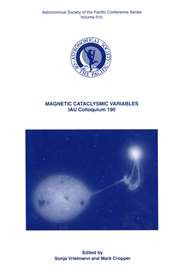No CrossRef data available.
Article contents
The Next Plan of the Nobeyama Radioheliograph
Published online by Cambridge University Press: 12 April 2016
Extract
A high time- and spatial-resolution radio interferometer for solar observations has been constructed at Nobeyama (Figure I.; Nakajima et al. 1994). The Nobeyama Radioheliograph consists of 84 antennas, 0.8m in diameter, arranged on a T-shape lines of 500m in the EW and 220m in the NS directions. The time resolution is 50 ms and the spatial resolution is 10”. The field of view is 40’ at the observing frequency 17GHz, which enables us to watch the whole sun. The radioheliograph has observed hundreds of flares during the few months since the beginning of regular observations in July ‘92, and such powerful performance has never before been demonstrated in the history of solar radio observations.
- Type
- 4. Plans for the Future
- Information
- Copyright
- Copyright © Astronomical Society of the Pacific 1994




